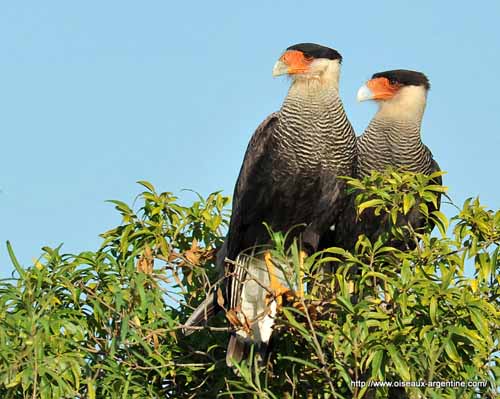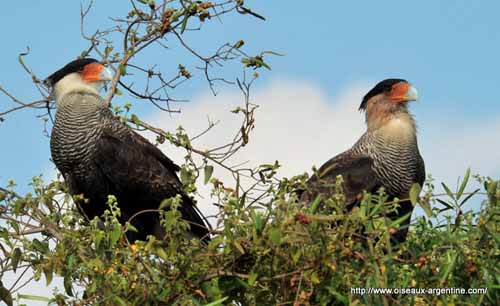
Fr: Caracara huppé
All: Schopfkarakara
Esp: Caracara Carancho - Carancho
Ita: Caracara meridionale
Nd: Zuidelijke Kuifcaracara
Sd: Sydlig tofscaracara
Port: Caracará
Photographers:
Eduardo Andrés Jordan
MIS AVES – AVES DE ARGENTINA
Philippe et Aline Wolfer
GALERIE
Text by Nicole Bouglouan
Sources:
HANDBOOK OF THE BIRDS OF THE WORLD Vol 2 by Josep del Hoyo-Andrew Elliot-Jordi Sargatal - Lynx Edicions - ISBN: 8487334156
BirdLife International (BirdLife International)
Global Raptor Information Network - Working to Conserve Birds of Prey in nature
El Zoológico Electrónico (Damisela)
Wikipedia, la enciclopedia libre
Southern Crested Caracara
Caracara plancus
Falconiformes Order – Falconidae Family
INTRODUCTION:
The Southern Crested Caracara is very similar to the Northern Crested Caracara (C. cheriway) but it has different range and occurs only in South America. This species is common in its range where it can be seen foraging on foot like a chicken, or robbing food from other bird species, including Cathartidae raptors.

DESCRIPTION OF THE BIRD:
Biometrics:
Length: 50-65 cm
Wingspan: 120-132 cm
Weight: 900-1600 g
The southernmost birds are usually larger and heavier.
The adult has black crown and crest. Cheeks, chin, throat and neck are white or pale buff. Mantle and breast are white to brownish with blackish-brown streaks. Rest of upperparts is brownish to black, with narrow whitish bars. Rump and tail are whitish with narrow black bars and broader black terminal bar at tail tip. The upperwing is brownish-black with conspicuous whitish patch at base of primaries.
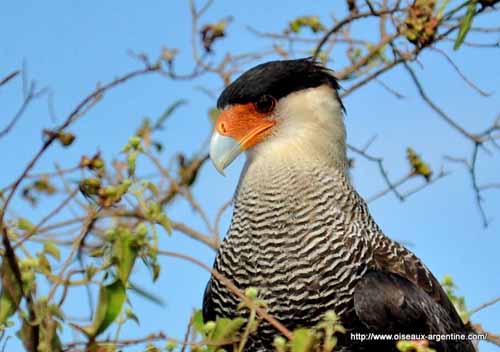
On the underparts, lower breast, belly and thighs are blackish. Vent and undertail-coverts are creamy-white with indistinct pale grey bars. On the underwing, the coverts are blackish, whereas the flight feathers are barred black-and-white, with white patch on primaries. The flight feathers are black-tipped.
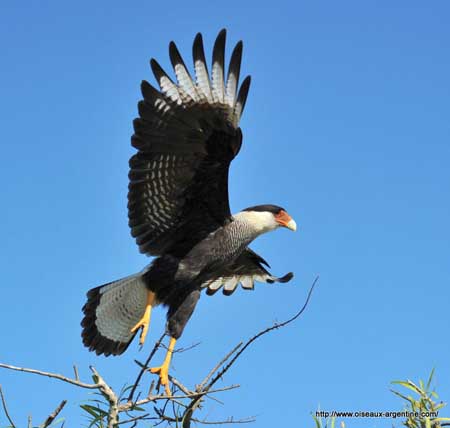
The bare skin of the face is red. The bill is pale bluish-grey. The eyes are dark brown to dull yellow. Legs and feet are yellow with strong black talons.
Both sexes are similar.
The immature is browner overall, with whitish streaks or blotches on back and breast. The bare parts are duller with pinkish face. Legs and feet are greyish.
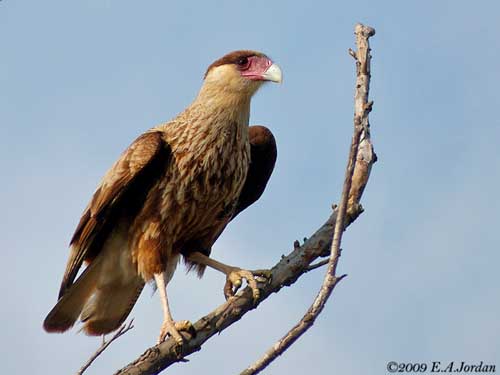
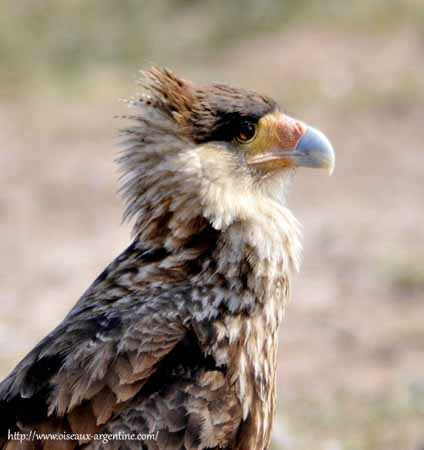
RANGE:
The Southern Crested Caracara occurs in South America from C Peru and C and SE Bolivia, E to the Amazon Delta, and S in Chile, Argentina, Paraguay and Uruguay, to Tierra del Fuego. It is also present on Falkland Islands where it is resident.
HABITAT:
The Southern Crested Caracara frequents all types of open country, both in lowlands and at mid-elevation. It occurs in pastures, river edges, forested and marshy areas. In Colombia and Ecuador, it can be found in upland areas. In Patagonia, it occurs in grassy foothills, shrubs and river valleys. The species is widespread in the lowlands of Bolivia. It can be seen from sea-level up to 2600 metres of elevation.
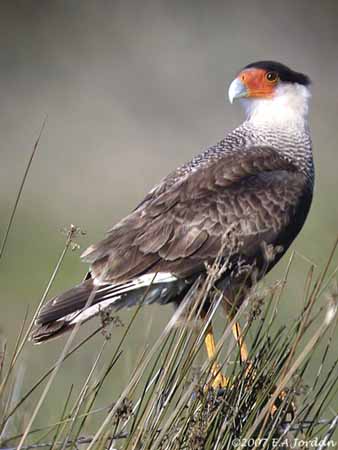
CALLS AND SONGS: SOUNDS BY XENO-CANTO
The Southern Crested Caracara gives chattering and rattling calls which probably gave the bird the name “caracara”.
The raucous territorial call is uttered while the bird throws the head back, touching the shoulders “krrrrrrrrrrok”. When disturbed at nest, it produces short clicks and grumbles.
BEHAVIOUR IN THE WILD:
The Southern Crested Caracara is an opportunistic feeder. It regularly feeds on carrion, including on carcasses of domestic livestock, involving sometimes conflict with farmers. But it also takes living preys such as freshwater turtles, iguanas, reptiles, crabs, earthworms (by turning over soil and grass), and insects (Coleopteran and larvae of Lepidoptera). It forages mainly by walking on the ground.
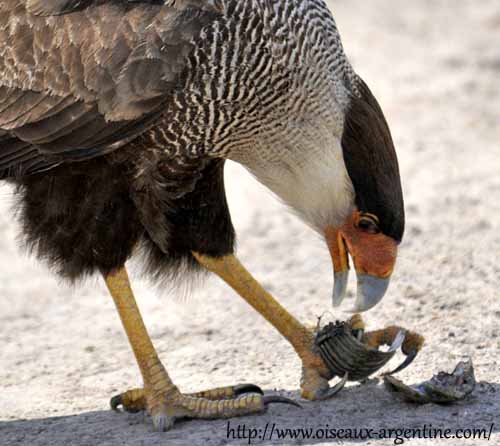
It may sometimes hunt in small groups of 4-5 individuals. It raids the nests of small bird species and Ardeidae colonies. It also steals food from other raptors, gulls and pelicans by harassing them in flight until they regurgitate or leave the prey.
However, it occasionally catches bird or insect on the wing, but this technique is not easy for this species. But it is able to kill preys as large as lambs.
Around a carcass with vultures and condors, it has the lowest rank in the hierarchy.
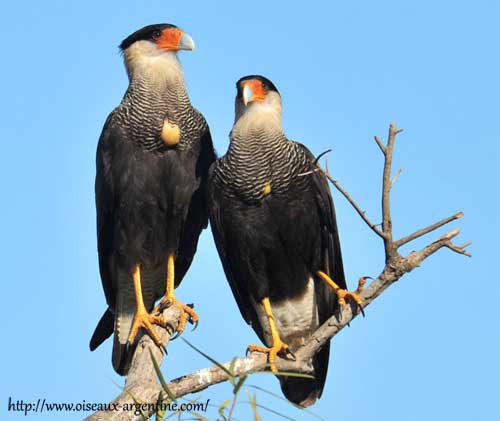
During the breeding season, the bare skin of the face becomes bright yellow in excitement and during displays. The mates may soar together. They are territorial and aerial fights often occur between males.
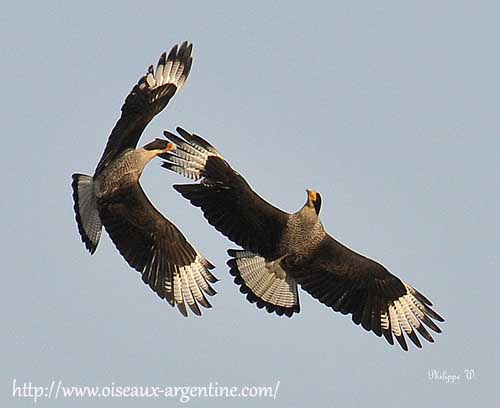
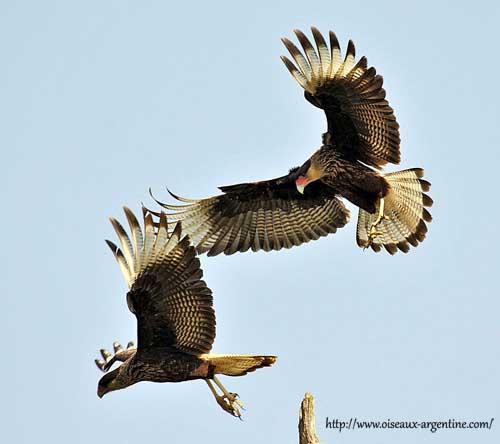
The Southern Crested Caracara is mainly sedentary in its range, with only some local movements. The species is resident on the Falklands.
The flight is powerful with wingbeats interspersed with glides. It also soars while circling in the air.
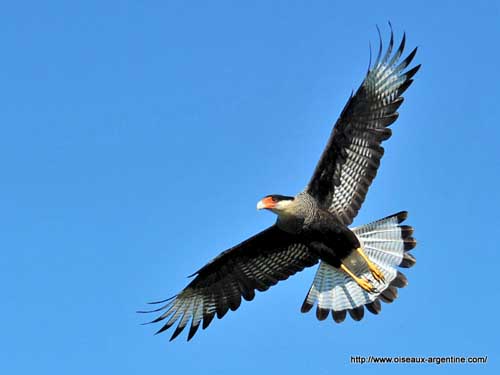
REPRODUCTION OF THIS SPECIES:
The breeding season varies according to the range.
The Southern Crested Caracara is solitary nester. It builds a large stick nest with a lining of wool, dung and other materials. It is placed at treetop of on cliff ledge. An old nest is often arranged and reused.
In Falkland Islands, the nest-site is on rocky outcrops on mountain crags, or on coastal or inland cliff ledge. The large nest is made with twigs and grass, and lined with wool.
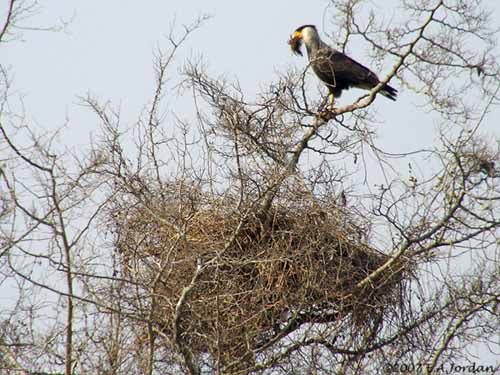
The female lays 2-3 eggs (in September or October in Falkland Is). The incubation lasts 28-32 days. At hatching, the chicks have pinkish-buff down and dark brown crown and back. The nesting period may vary from 50 to 56 days.
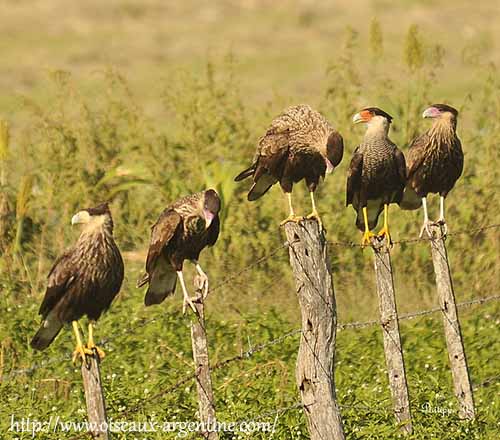
PROTECTION / THREATS / STATUS:
The Southern Crested Caracara is common throughout the range, and mainly in the southern part. It is rarer along the Pacific slope of Peru. The Falkland’s population is estimated at about 500 breeding pairs, and the introduced livestock provides them good food resources.
The global population is suspected to be increasing, due to creation of suitable habitat through deforestation.
The Southern Crested Caracara is currently evaluated as Least Concern.
